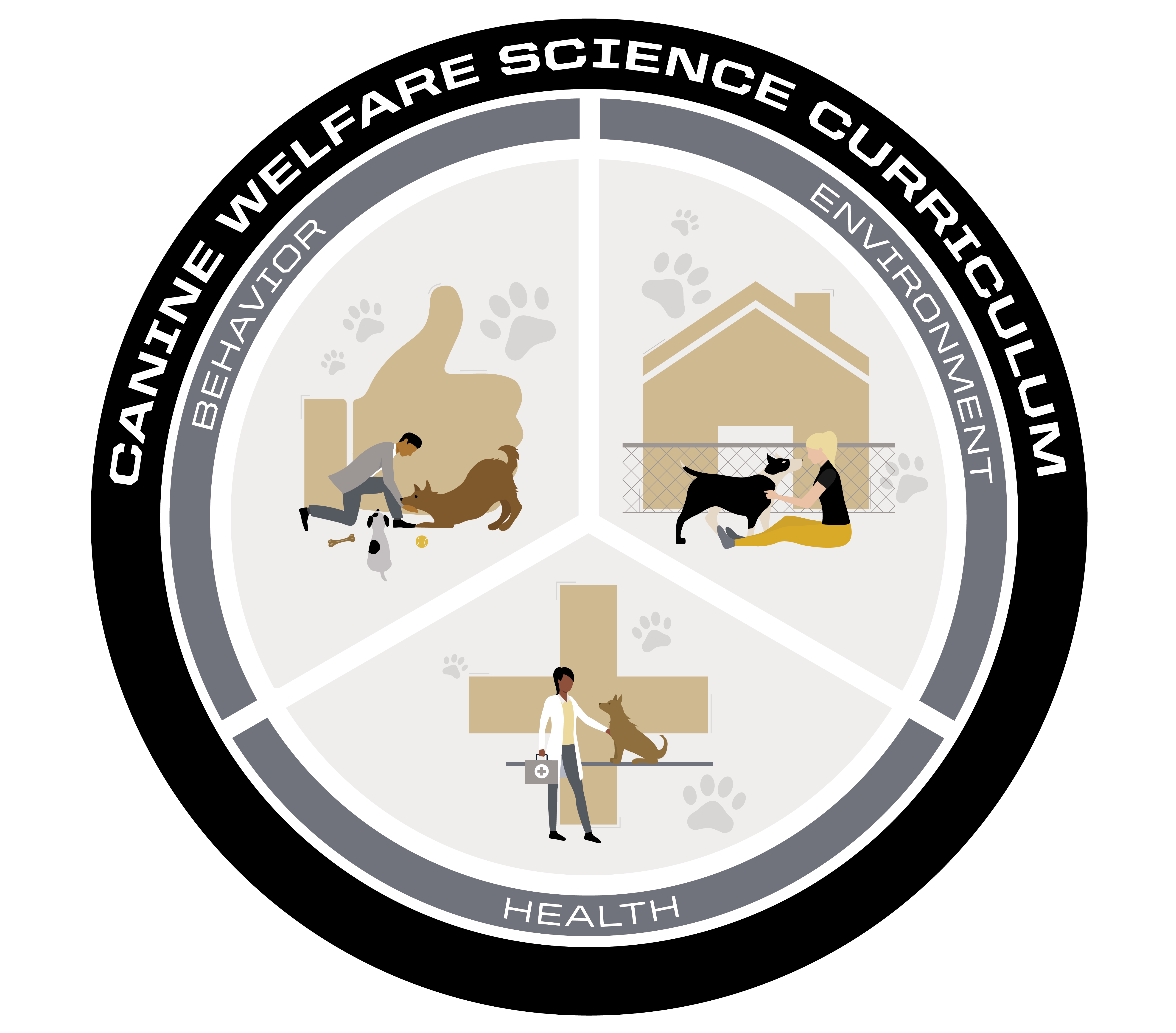Canine Welfare Science
The Canine Welfare Science website provides carefully curated educational resources to make the science of dog welfare accessible to all and to promote the best animal care and management practices.
Resources are specially tailored to the needs of dogs living in breeding kennels, shelters and rescues, as pets in homes, or in research facilities.
Together, with knowledge and effort, we can improve the welfare of dogs in our care. We hope you will join us in our mission.
Welcome to the Canine Welfare Science Resource Site
Here you will find a wealth of educational materials and resources that have been carefully collected to help those that care for dogs. On this site, you will find information that is based in science and addresses the behavioral, health, and environmental needs of dogs as well as resources that assist caretakers to positively impact the welfare of dogs in their care. By gathering this information in one location, we hope to provide a convenient source of evidence-based information that fuels continuous educational improvement.
This space aims to bridge both potential knowledge gaps and dog-centric communities in a shared quest to improve the welfare of dogs living in breeding, research, teaching and sheltering kennels. Helping to improve pet families’ knowledge on responsible dog sourcing and ownership is critical to accomplishing these goals. Translating current science to expand our impact on the quality of lives dogs and people experience together is essential to support the human-animal bond and help keep pets in their homes.
Learn About Our Library
Each of the three main curriculum areas of behavior, health, and environment include a variety of resources ranging from checklists to peer-reviewed scientific journal articles, and photo and video examples.
Our goal is to promote canine welfare by providing reliable information to all who care for and about dogs. Below each topic area library, resources tailored to the needs of dogs living in shelters and rescues, pet homes, and research kennels are included.
Canine Welfare Science Curriculum
The resources on this site provide evidence-based information to support dog breeders and caretakers in their efforts to meet the needs of the dogs in their care. The information is organized into three areas: behavior, health, and environment. Convenient and easy to use, the curriculum makes the science of dog welfare readily available to everyone.

Graphic Navigation
Learners can also use the Canine Welfare Science Curriculum graphic to quickly navigate between the three areas of the curriculum. Click Behavior, Environment, or Health to go directly to the category’s resources in the Library.
Do You Have a Resource to Share?
We are always growing and welcome your submissions. Please contact us!
Behavior
Ensuring the welfare of dogs requires supporting normal behavioral development and positive mental and physical stimulation through socialization, enrichment, exercise, and social interactions.
Environment
Well-managed environments promote dog welfare by providing adequately sized spaces that are clean, comfortable, and designed to promote behavioral, mental, and physical health.
What is Animal Welfare?
Animal welfare is how an animal is coping with the conditions in which it lives.
How do we know how well an animal is doing?
“An animal is in a good state of welfare if (as indicated by scientific evidence) it is healthy, comfortable, well-nourished, safe, able to express innate behavior, and if it is not suffering from unpleasant states such as pain, fear, and distress.” -OIE This can be assessed through internal and external physiological measures as well as behavioral measures.
“The welfare of an individual is its state as regards to its attempts to cope with its environment.”
– D. Broom
About Us
The Canine Welfare Science Resource Site is a product of the Croney Research Group at Purdue University. The research group promotes the welfare of dogs through innovation in research, education, and outreach.


